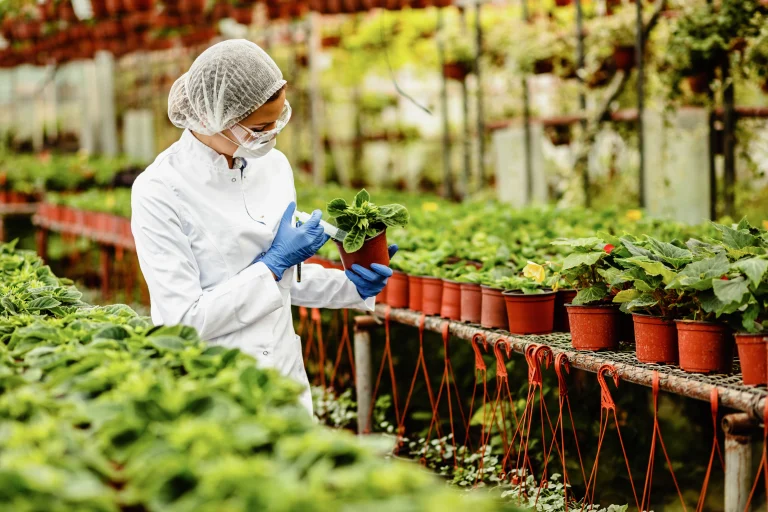🌿 Discover the Easiest Vegetables That Can Be Grown Indoors All Year Long
Imagine plucking fresh spinach, juicy cherry tomatoes, or crisp lettuce straight from your kitchen. If you think you need a backyard to grow your own food, think again. In 2025, more and more people are turning to indoor gardening. Why? Because vegetables that can be grown indoors bring convenience, freshness, and food security right into your home.

If you’re dreaming of taking food independence to the next level, The Self-Sufficient Backyard is your go-to guide. Learn how to grow food indoors and outdoors, collect water, store harvests, and even create off-grid systems—all from any space you live in.
Whether you’re living in an apartment, facing harsh weather, or simply want year-round greens, growing vegetables indoors is practical and rewarding. This guide explores the 15 best vegetables that can be grown indoors, along with helpful care tips and growing hacks to help you start harvesting right at home.
🌿 Why Choose Vegetables That Can Be Grown Indoors in 2025?

🌞 Benefits of Indoor Vegetable Gardening
- Harvest fresh vegetables year-round, regardless of climate
- Save money and reduce waste
- Control pests, diseases, and soil quality
- Perfect for apartments, small homes, or urban spaces
🔧 What You Need to Get Started
- Containers with good drainage
- Potting mix or hydroponic system
- Grow lights (LEDs are ideal for vegetables that need full sun)
- A regular watering schedule and stable temperatures
Growing your own indoor vegetables also gives you full control over what you eat. No chemicals. No plastic packaging. Just fresh, healthy food.
🥦 15 Best Vegetables That Can Be Grown Indoors
how to grow vegetables indoors

Let’s dive into the most productive, low-maintenance vegetables that thrive inside. Each of these indoor-friendly vegetables will grow well with the right care, even in small spaces.
1. Lettuce
- Grows fast and doesn’t need much space
- Ideal for shallow trays on windowsills
- Keep soil moist and harvest leaves when ready
2. Green Onions
- Regrow from kitchen scraps in water or soil
- Thrive in low light, easy to maintain
- Snip and regrow multiple times
3. Bell Peppers
- Need deep pots and strong light
- Prune for better air circulation
- Pollinate flowers by hand indoors
4. Bush Cucumbers
- Choose compact, bush-type varieties
- Train vines on a mini trellis
- High humidity and full sun required
5. Spinach
- Low-light tolerant and fast growing
- Keep cool (under 75°F) for best results
- Cut outer leaves and let the center regrow
6. Carrots
- Use deep pots (8–12 inches) for root growth
- Choose short or round varieties like Parisian
- Keep soil evenly moist
7. Cherry Tomatoes
- Require 12–16 hours of strong light daily
- Best in 1-gallon+ containers
- Stake or cage the plant for support
8. Kale
- Hardy and produces continuously
- Needs moderate to bright light
- Harvest outer leaves regularly
9. Garlic Greens
- Grown from garlic cloves (not bulbs)
- Harvest green shoots to use like chives
- Minimal light required
10. Chili Peppers
- Compact and colorful
- Need 6–8 hours of bright light
- Prune lightly for better yield
11. Microgreens
- Harvest in 1–2 weeks
- Use shallow trays with good airflow
- High in nutrients and perfect for small spaces
12. Arugula
- Spicy green that grows in cooler temps
- Perfect for containers and quick harvests
- Cut-and-come-again harvesting style
13. Bush Beans
- Choose dwarf/bush varieties for pots
- Full sun required (or grow lights)
- Support stems with small stakes
14. Mustard Greens
- Easy to grow in low light
- Harvest baby greens in under 3 weeks
- Great for stir-fries and salads
15. Herbs (Bonus)
- Basil, mint, parsley, cilantro, and thyme
- Ideal for kitchen windows or shelves
- Boost flavor and reduce grocery trips
These vegetables that can be grown indoors require minimal space but deliver maximum satisfaction.
🥜 Simple Recipes Using Vegetables Grown Indoors

After harvesting your indoor vegetables, try these easy recipes:
Garden Wraps
- Use lettuce, arugula, cherry tomatoes, and green onions
- Add hummus, grilled tofu or chicken, and roll up
Stir-Fried Greens
- Mix kale, mustard greens, garlic greens, and spinach
- Saute in sesame oil with chili flakes and soy sauce
Fresh Herb Pesto
- Blend basil, parsley, garlic greens, olive oil, and sunflower seeds
- Toss with pasta or use as sandwich spread
Homemade Salsa
- Combine cherry tomatoes, chili peppers, green onions, and cilantro
- Add lime juice and salt to taste
These dishes celebrate the flavor and freshness of indoor vegetables grown with care.
💡 Tips for Success with Vegetables That Can Be Grown Indoors

💚 Light
- Use LED grow lights if you lack sunlight
- Most fruiting vegetables need 12–16 hours of light
💧 Water
- Check moisture daily; water when topsoil dries
- Avoid waterlogging and ensure drainage
👀 Airflow & Temperature
- Use fans to prevent mold or mildew
- Maintain consistent temperatures (65–75°F)
🥛 Feeding
- Use organic, liquid fertilizer every 2–3 weeks
- Match nutrients to the plant’s growth stage
The better your setup, the more reliable your results growing vegetables indoors.
🥕 Product Recommendation Section:
Recommended Resource: The Self-Sufficient Backyard
For anyone looking to turn their home into a self-reliant haven, The Self-Sufficient Backyard is an invaluable resource. It’s packed with practical guidance on:
-
Indoor and outdoor food production
-
Rainwater harvesting systems
-
Off-grid power options
-
Food preservation strategies
❓ FAQ: Vegetables That Can Be Grown Indoors
What are the easiest vegetables to grow indoors?
Lettuce, green onions, microgreens, and herbs are easiest for beginners.
Can I grow vegetables indoors without grow lights?
Yes, leafy greens and microgreens can grow near bright windows. But most vegetables need additional lighting.
What containers work best for indoor vegetables?
Use fabric pots, plastic containers, or ceramic pots with drainage holes. Deeper containers are better for root vegetables.
How long do indoor vegetables take to grow?
It depends on the vegetable: microgreens (7–14 days), lettuce (4 weeks), cherry tomatoes (8–10 weeks).
Can I grow vegetables indoors all year round?
Yes! With the right lighting and environment, your indoor garden can thrive 365 days a year.
If you love the idea of growing your own food,
The Self-Sufficient Backyard takes it to the next level. Whether you’re in a small apartment or planning an off-grid lifestyle, it’s a powerful guide for turning any space into a productive food source.
✅ Conclusion: Start Growing Vegetables Indoors Today
You don’t need a huge backyard or warm weather to enjoy fresh vegetables. With the right setup, you can grow your own food year-round with just a windowsill, a few pots, and some dedication. From lettuce and spinach to cherry tomatoes and peppers, these vegetables that can be grown indoors are perfect for your kitchen, apartment, or indoor greenhouse.
👉 Ready to turn your indoor space into a year-round food source? Grab your copy of The Self-Sufficient Backyard here and take the first step toward a greener, healthier lifestyle.
So why wait? Start growing vegetables indoors and turn your home into a healthy, green oasis.

